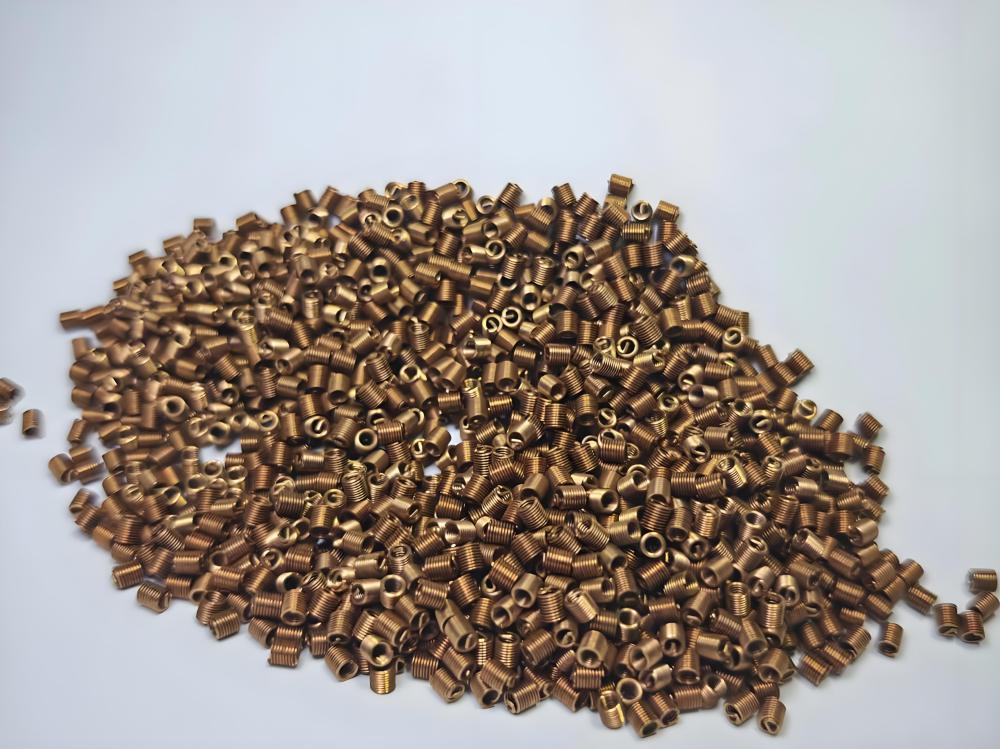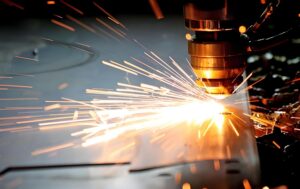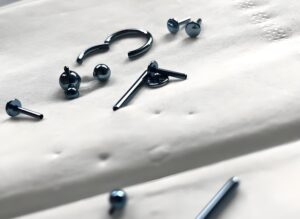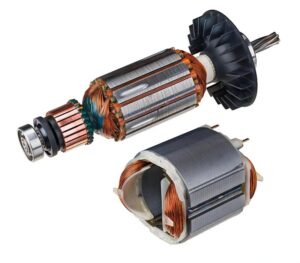What Is Phosphor Bronze?
Phosphor bronze is a copper-based alloy that combines copper with tin and a small amount of phosphorus. This unique blend results in a material that boasts exceptional strength, corrosion resistance, and wear resistance, making it ideal for demanding applications. The addition of phosphorus enhances the alloy’s stiffness and durability, setting it apart from other bronze alloys. Often referred to as “phos bronze” in industrial circles, this material has become a staple in precision engineering, electronics, and even musical instruments.
The alloy’s history traces back to the 19th century when metallurgists sought to create a material that could withstand harsh conditions while maintaining structural integrity. Today, phosphor bronze is celebrated for its ability to perform reliably in environments where other metals might falter.
Chemical Composition of Phosphor Bronze
The chemical makeup of phosphor bronze is what gives it its distinctive characteristics. Typically, the alloy consists of:
- Copper (Cu): 94–96%, forming the base of the alloy.
- Tin (Sn): 3.5–10%, which enhances strength and corrosion resistance.
- Phosphorus (P): 0.01–0.35%, which improves stiffness, wear resistance, and fatigue strength.
Trace amounts of other elements, such as iron or zinc, may be present depending on the specific grade, but copper, tin, and phosphorus remain the core components. The precise balance of these elements can be adjusted to tailor the alloy for specific applications, such as springs, electrical connectors, or bushings.
The role of phosphorus is particularly noteworthy. Even in small quantities, it acts as a deoxidizer during the manufacturing process, reducing the risk of porosity and improving the alloy’s overall quality. This makes phosphor bronze a reliable choice for components that require consistent performance under stress.
Properties of Phosphor Bronze
Phosphor bronze is prized for its unique combination of physical and mechanical properties, which make it suitable for a wide range of applications. Below, we break down these properties into two key categories.
Physical Properties
Phosphor bronze exhibits several physical characteristics that make it stand out:
- Density: Approximately 8.8 g/cm³, slightly denser than pure copper, contributing to its robustness.
- Color: A reddish-gold hue, often described as warm and aesthetically pleasing, making it a favorite in decorative applications.
- Corrosion Resistance: Highly resistant to corrosion, especially in marine environments, due to the protective oxide layer formed by copper and tin.
- Thermal Conductivity: Moderate, around 60–80 W/m·K, suitable for applications requiring heat dissipation without the high conductivity of pure copper.
- Electrical Conductivity: Lower than pure copper (around 15% IACS), but sufficient for electrical components like connectors and springs.
These physical attributes make phosphor bronze a versatile material for industries where durability and resistance to environmental factors are critical.
Mechanical Properties
The mechanical properties of phosphor bronze further enhance its appeal:
- Tensile Strength: Ranges from 325 to 960 MPa, depending on the grade and temper, making it strong enough for heavy-duty applications.
- Elasticity: Excellent spring properties, allowing it to return to its original shape after deformation, ideal for springs and diaphragms.
- Fatigue Resistance: High resistance to fatigue, enabling it to withstand repeated stress cycles without cracking.
- Wear Resistance: The presence of phosphorus improves resistance to wear and abrasion, extending the lifespan of components like bushings and bearings.
- Ductility: Moderate ductility allows for forming and shaping without compromising strength.
These mechanical properties make phosphor bronze a top choice for components that must endure mechanical stress while maintaining precision and reliability.
What Are the Types of Phosphor Bronze Grades?
Phosphor bronze comes in various grades, each tailored to specific applications based on its composition and properties. Some of the most common grades include:
- C51000 (PB102): Contains approximately 5% tin and 0.2% phosphorus. This grade is widely used for springs, electrical connectors, and fasteners due to its excellent balance of strength and formability.
- C52100 (PB104): With 8% tin, this grade offers higher strength and is often used in heavy-duty springs and marine hardware.
- C51900: Features around 6% tin and is known for its superior fatigue resistance, making it ideal for diaphragms and bellows.
- C54400: Includes zinc and lead alongside tin and phosphorus, offering improved machinability for components like bushings and bearings.
Each grade is designed to meet specific performance requirements, allowing manufacturers to select the most suitable option for their needs. The choice of grade depends on factors such as the desired strength, corrosion resistance, and application environment.
What Is Phosphor Bronze Used For?
Phosphor bronze’s versatility makes it a popular choice across numerous industries. Some of its most common applications include:
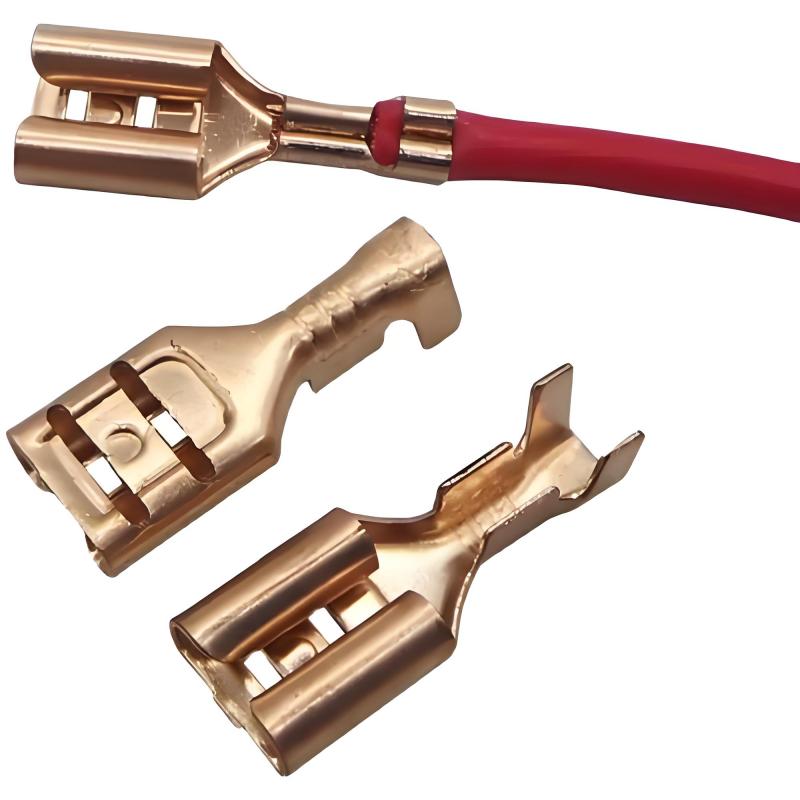
- Electrical Components: Used in connectors, terminals, and switchgear due to its electrical conductivity and corrosion resistance.
- Springs and Fasteners: The alloy’s elasticity and fatigue resistance make it ideal for springs, clips, and screws that require consistent performance.
- Bearings and Bushings: Its wear resistance and low friction properties make it a preferred material for bearings, bushings, and gears in machinery.
- Marine Hardware: Phosphor bronze’s resistance to saltwater corrosion makes it a go-to material for marine fittings, propellers, and pump components.
- Musical Instruments: Widely used in guitar strings, cymbals, and saxophone reeds for its warm tone and durability.
- Industrial Components: Found in diaphragms, bellows, and valve components where flexibility and strength are essential.
The alloy’s ability to perform reliably in diverse conditions has cemented its reputation as a material of choice for precision engineering and manufacturing.
Advantages and Disadvantages of Phosphor Bronze
Like any material, phosphor bronze has its strengths and limitations. Understanding these can help manufacturers make informed decisions about its use.
Advantages
- Corrosion Resistance: Performs exceptionally well in harsh environments, including marine and chemical settings.
- Durability: High wear and fatigue resistance ensure long-lasting performance in demanding applications.
- Spring Properties: Excellent elasticity makes it ideal for components that require repeated flexing without permanent deformation.
- Aesthetic Appeal: Its warm, reddish-gold color is visually appealing for decorative and musical applications.
- Versatility: Available in various grades to suit different needs, from electrical to mechanical applications.
Disadvantages
- Cost: More expensive than some other alloys due to the cost of tin and the complexity of manufacturing.
- Lower Conductivity: Not as conductive as pure copper, which may limit its use in high-conductivity applications.
- Machinability: While certain grades (e.g., C54400) are machinable, others can be challenging to machine compared to softer metals.
- Weight: Slightly denser than some alternatives, which may be a consideration in weight-sensitive applications.
Despite these drawbacks, phosphor bronze’s benefits often outweigh its limitations, particularly in applications where durability and corrosion resistance are paramount.
Why Choose Phosphor Bronze for Your Next Project?
Phosphor bronze is a remarkable alloy known for its strength, durability, and versatility. Its unique properties make it suitable for a variety of applications, from electrical components and springs to musical instruments and marine hardware. As a company in the machining industry, Precionn understands the importance of high-quality materials like phosphor bronze in the production of precision components. With years of expertise in machining and a commitment to excellence, Precionn is dedicated to providing top-notch products for our international customers. Whether you’re in need of phosphor bronze components or other high-performance alloys, Precionn is your trusted partner in manufacturing solutions.

